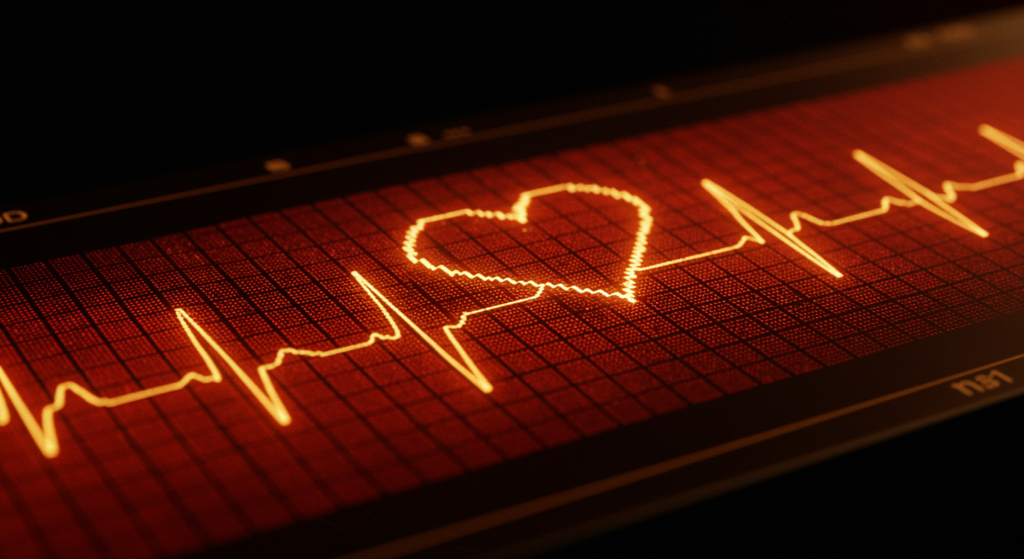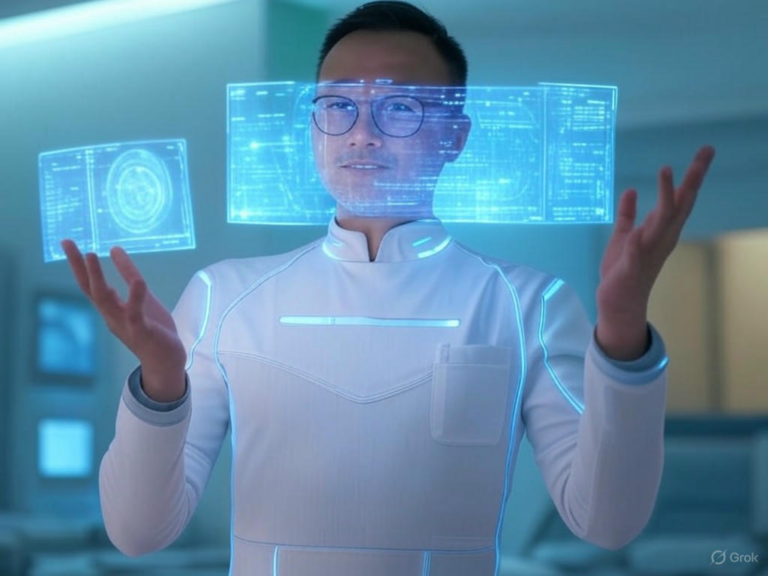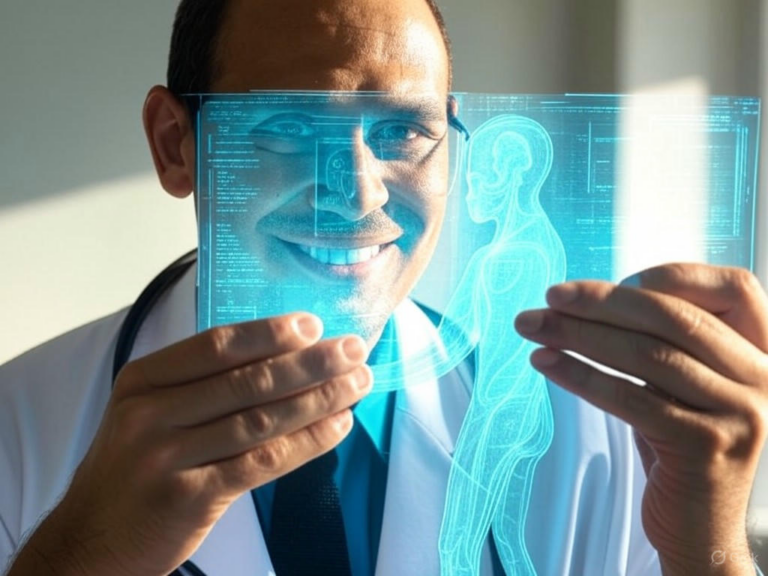
AI-Enhanced ECG Interpretation: Tool Achieves Pixel-Level Precision
Revolutionizing ECG Analysis with Artificial Intelligence
AI-powered ECG interpretation is changing the game in cardiology, where the electrocardiogram (ECG) has long been a go-to for spotting heart issues like arrhythmias or heart attacks. AI-powered ECG interpretation tools now deliver pixel-level precision, pulling more insights from ECG images and making diagnoses sharper than ever. This isn’t just tech for tech’s sake—it’s about giving doctors real tools to bridge cutting-edge AI with daily medical challenges, ultimately leading to better patient outcomes. As one study highlights, this approach can transform how we handle heart data in busy clinics.
Think about it: in a world where heart disease remains a top killer, tools that enhance accuracy without overwhelming clinicians are a big win. Have you ever considered how a simple ECG image could hold clues to early detection? By analyzing every pixel, these systems catch subtle signs that might slip past human eyes, fostering greater trust in AI’s role in healthcare.
How AI Achieves Pixel-Level ECG Analysis
What sets AI-powered ECG interpretation apart is its ability to work with messy, real-world images, like photos of ECG printouts taken on a phone. Traditional methods demand perfect digital files, but this tech uses advanced math, such as the Jacobian matrix, to dissect each pixel and reveal hidden details in ECG signals. It’s like giving AI a magnifying glass for the heart’s electrical activity, ensuring even minor irregularities don’t go unnoticed.
- It fixes distortions and aligns axes in flawed images, making analysis reliable.
- The system rebuilds digital ECG signals from old paper records or quick snapshots.
- Key areas get highlighted, guiding doctors to potential problems and speeding up decisions.
Overcoming Real-World Challenges in AI-Driven ECG Analysis
Doctors often deal with ECGs that are wrinkled, shadowed, or tilted—problems that can muddy the picture. That’s where AI-powered ECG interpretation shines, trained on vast datasets of these imperfect images to stay robust in any setting. For instance, in rural clinics with limited equipment, this means accurate readings from a smartphone photo, reducing diagnostic errors and saving lives.
Imagine a scenario where a paramedic snaps a photo of an ECG in the field; AI steps in to clean it up and provide instant insights. This adaptability not only tackles noise and artifacts but also builds confidence in AI’s everyday utility.
Clinical Benefits of AI-Enhanced ECG Interpretation
Bringing AI-powered ECG interpretation into hospitals and clinics offers clear advantages, from spotting hidden heart issues to streamlining workflows. Research shows these tools boost diagnostic accuracy by catching waveform nuances that manual reviews might miss, helping prioritize patient care effectively.
- Increased Diagnostic Accuracy: AI excels at identifying faint rhythm changes, potentially catching conditions like atrial fibrillation early.
- Risk Stratification: It flags high-risk patients, allowing for proactive steps like lifestyle advice or medications.
- Efficiency and Workflow Support: By automating routine checks, doctors can focus more on patient interaction, cutting down wait times in emergency rooms.
- Explainability and Transparency: These systems explain their decisions, showing exactly which pixels influenced a diagnosis, which builds trust and encourages adoption.
If you’re a clinician, consider how this could free up your day—perhaps using AI to handle initial screenings so you can dive deeper into complex cases. It’s not just about speed; it’s about making heart care more human-centered.
Behind the Scenes: AI Techniques in Modern ECG Digitization
At the core of AI-powered ECG interpretation are deep learning models and multimodal large language models that handle images and text seamlessly. Trained on huge libraries of ECG data, they learn to spot patterns and offer actionable insights, turning a simple image into a wealth of clinical knowledge.
Key Steps in AI-Enhanced ECG Digitization
The process starts with image normalization, where AI corrects any twists or scales to ensure consistency. Next, it reconstructs the ECG signal using neural networks, followed by validation checks that measure accuracy with tools like correlation coefficients.
- Image normalization ensures everything lines up perfectly, even if the original photo is off-kilter.
- Digital signal reconstruction pulls out the core waveform, making it ready for analysis.
- Post-processing refines the data, using metrics to confirm it’s spot-on, often achieving over 91% correlation in tests.
This step-by-step approach means AI-powered ECG interpretation isn’t just fast—it’s reliable, even with tough image quality. For example, in a recent trial, it handled noisy scans with minimal errors, proving its value in real emergencies.
Comparing Traditional and AI-Enhanced ECG Interpretation
When you stack traditional methods against AI-powered ECG interpretation, the differences are striking, especially in flexibility and precision.
| Feature | Traditional ECG Analysis | AI-Enhanced ECG Analysis |
|---|---|---|
| Input Source | Clean, digital ECG files | Paper, photo, or digital images |
| Accuracy | Relies on human expertise, with potential oversights | Delivers pixel-level precision for consistent results |
| Diagnostic Speed | Often slow in high-pressure environments | Offers real-time analysis to keep things moving |
| Explainability | Variable based on the reviewer | Provides clear, visual explanations for better understanding |
| Integration Potential | Mostly manual and isolated | Easily fits into electronic health records and telehealth |
This comparison shows why more practices are turning to AI—it’s not replacing doctors but empowering them with tools that adapt to modern needs.
The Journey from Pixels to Patient Care
AI-powered ECG interpretation is more than pixels on a screen; it’s about translating data into better health outcomes. By making AI speak the language of medicine, it helps doctors understand and trust the process, leading to smarter decisions in everything from emergency responses to routine check-ups.
Clinical Integration and Adoption Strategies
- Enable on-the-spot diagnosis in remote or urgent situations, like ambulances or underserved areas.
- Seamlessly connect with telemedicine platforms for virtual consultations.
- Facilitate quick second opinions through shared images and AI insights.
- Allow systems to learn from new data, continually improving accuracy over time.
If you’re exploring these tools, start by integrating them into your workflow gradually—perhaps testing in low-stakes scenarios to build familiarity.
Limitations and Ethical Considerations
While AI-powered ECG interpretation holds promise, it’s important to address its limitations, such as the need for thorough testing across diverse groups to avoid biases. Data privacy is another key concern, especially with cloud storage, and AI should always complement, not supplant, human judgment.
- Ensure models are validated in various populations to maintain fairness.
- Prioritize secure data handling to protect patient information.
- Focus on transparency to prevent algorithmic errors from impacting care.
- Always involve clinicians in the loop for oversight and ethical use.
What are your thoughts on balancing innovation with safety in AI healthcare? Keeping these factors in mind can help guide responsible adoption.
Future Directions: Toward Smarter, Personalized Cardiac Care
The future of AI-powered ECG interpretation looks bright, with ongoing research aiming for even greater accuracy and personalization. Imagine systems that incorporate full patient histories for tailored risk assessments, potentially preventing heart issues before they escalate.
Innovations like advanced clinical reasoning modules could make AI an even stronger partner in care. As we move forward, the goal is to create tools that not only diagnose but also predict, offering a proactive approach to heart health.
The Takeaway for Everyday Use
In essence, AI-powered ECG interpretation is ushering in a new era of cardiology that’s faster, more precise, and built on trust. For patients, this could mean earlier interventions and better results; for doctors, more time to connect personally.
We’d love to hear your experiences with AI in medicine—share your thoughts in the comments below, or check out our other articles on emerging health tech for more insights.
References
1. “AI tool helps doctors interpret ECGs,” Medical Xpress, https://medicalxpress.com/news/2025-04-ai-doctor-language-tool-ecg.html
2. Journal of the American College of Cardiology, https://www.jacc.org/doi/full/10.1016/j.jacc.2025.02.008
3. medRxiv, https://www.medrxiv.org/content/10.1101/2024.08.31.24312876v1.full-text
4. PMC, https://pmc.ncbi.nlm.nih.gov/articles/PMC11240622/
5. arXiv, https://arxiv.org/html/2501.18670v1
6. Technion, https://www.technion.ac.il/en/blog/article/making-ai-speak-the-doctors-language/
7. PMC, https://pmc.ncbi.nlm.nih.gov/articles/PMC11464944/
8. Life Technology, https://www.lifetechnology.com/blogs/life-technology-medical-news/advanced-ai-enhances-ecg-analysis-in-modern-medicine
AI-powered ECG interpretation, pixel-level ECG analysis, AI in cardiology, ECG digitization, advanced medical AI, heart disease diagnosis, AI diagnostic tools, cardiology technology, ECG image processing, medical AI innovations







